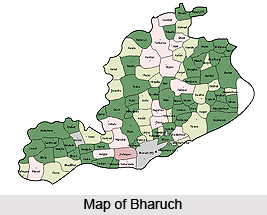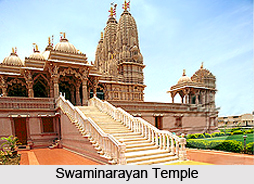 Bharuch is one of the oldest seaports of Gujarat that flourished in the 1st century AD. The city is located on the banks of River Narmada. Bharuch is situated at 21.7degree N 72.9 degree E. It has an average elevation of 15 meters.
Bharuch is one of the oldest seaports of Gujarat that flourished in the 1st century AD. The city is located on the banks of River Narmada. Bharuch is situated at 21.7degree N 72.9 degree E. It has an average elevation of 15 meters.
Origin of name of Bharuch
The city got its name from the temple `Bhrigukachba`, which was the temple of Bhrigu Rishi. Later the name was shortened to Bharuch.
History of Bharuch
Once Bharuch was a small village located on the banks of River Narmada. By 500 BC, the city was known to the Arab and Ethiopian traders. It was a link port to the luxury goods trade from the Far East and the interior of the Indian sub-continent to the civilizations of South-west Asia, the Middle-East, the Mediterranean basin including Northern Africa and Europe.
As per mythology, the place was sacred among sages. It is said that in Bharuch, the celebrated Asura king Mahabali, conducted a great sacrifice and for it came a Bhrahmin boy named Vamana, who hampered with the king`s sacrifice and put an end to his reign.
 Archeological history says that there were ruins of many ancient temples. During the 322-185 BC, Bharuch was part of the Mauryan Empire, the Western Satraps and the Guptas. Afterwards, it was annexed by the Mughals, and finally by the British.
Archeological history says that there were ruins of many ancient temples. During the 322-185 BC, Bharuch was part of the Mauryan Empire, the Western Satraps and the Guptas. Afterwards, it was annexed by the Mughals, and finally by the British.
Bharaich was known to Europeans as Barigaza(Greek word). From this Greek word, it is evident that there was a settlement of Greek traders. The Greek buildings and forts found here were earlier mistaken to be that of Alexander, the Great.
Economy of Bharuch
Economically, Bharuch was a prosperous country due to its location on the Narmada River. As a result of this, agriculture and other linked commercial activities have flourished in Bharuch. Bharuch is a central shopping center for many villages spread around its boundaries such as Palej, Valan, Vareydiya, Kamboli e.t.c.
Modern Bharuch is one of the most great industrialized areas in the world. There are large chemical plants producing fertilizers, paints, dyes, cotton, textiles, and dairy products. Bharuch is also Gujarat`s biggest Liquid cargo terminal. A very large plant of fertilizers, chemicals and IT Services-GNFC Ltd is located in Bharuch City. Large multinational centers like Videocon, China light & power, BASF, Johnson, Reliance, Tata`s, Aditya Birla group, Welspun Stahl, J B Chemicals, Gujarat Fluorochmicals Ltd. D etc. have set up Manufacturing Units in and around Bharuch.
Demography of Bharuch
 As per the 2001 India census, Bharuch had a population of 148,391. Males constitute 52% of the population and females 48%. Bharuch has an average literacy rate of 78%, of which 82% are males and 73% are females.
As per the 2001 India census, Bharuch had a population of 148,391. Males constitute 52% of the population and females 48%. Bharuch has an average literacy rate of 78%, of which 82% are males and 73% are females.
Culture of Bharuch
People of Bharuch are followers of different religions. They live in harmony and accord. The city is today considered to be a great example of communal equality. The majority of the population constitutes Muslims. There are people belonging to other religions as Hindus, Sikhs, Jains etc.
The staple diet of Bharuchi people is kitchree kuree and daar-gosht chawal, which belong to the category of lentils, meat and boiled rice.
Places of interest in Bharuch
The important places of interest in Bharuch are:
•The Bhrigu Rishi Temple
•Jama Masjid
•The Old Fort



















